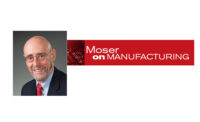In part 1 of our two-part series on automation and reshoring, we discussed how implementing automation offsets higher wages and increases efficiency and competitiveness, thereby accelerating reshoring. In part 2, we will review additional cases and discuss how to use total cost of ownership (TCO) and automation to enable reshoring.
Most companies make sourcing decisions based solely on freight-on-board price, or at most landed cost, often resulting in a 15 to 30 percent understatement of offshoring costs. The TCO Estimator, a free online tool, guides companies through a comprehensive system for recognizing and quantifying all of the costs and risks associated with offshoring and reshoring. Supply chain companies should stay focused on selling against imports using total cost analysis to remove or minimize the price gap. Companies can then use automation to close any remaining gaps.
It is almost impossible to get a positive ROI on domestic automation when faced with an alternative of 30 percent lower manufacturing cost in Asia. Doing ROI based on a 5 percent TCO gap makes domestic automation attractive. So, do the TCO math before the ROI math.
It’s important to note that automation helps developed countries more than developing countries. Developing countries’ key advantage is lower wage rates. Automation reduces the labor hours required to produce goods and shifts the mix toward higher skilled workers. Compared to China, the wage gap is smaller at higher skill levels. In short, with automation, U.S. manufacturers can produce as much goods as Chinese manufacturers, using fewer workers at smaller wage gaps. Additionally, automation can actually be more costly in China because machinery imported to China is subject to their value-added tax (VAT). Burden rates are often higher in China.
GW Plastics, a medical device manufacturer in Bethel, VT, reshored one project from China and another from Mexico by using fully and semiautomatic assembly and device packaging. “We are committed to investing in the latest technology to help our customers reduce costs and improve quality through the use of highly automated integrated thermoplastic and liquid silicone molding, assembly and advanced in-house tooling solutions,” says Tim Reis, vice president of healthcare business development at GW Plastics.
Based in Salt Lake City, thermoformer and medical products manufacturer Premier Plastics Inc. recently invested $1 million in new automated equipment. Premier added six workers and a third shift due to pandemic-driven growth. Jim Holbrook, the company’s founder and president, found the new equipment and robotic automated system was 70 percent faster than his existing equipment, shortening production times with significant cost savings. “That machine gives us 1.5 times the output than my other machines,” says Holbrook. “We’re talking about buying another one soon and replacing an 8-year-old machine. We’re contemplating going to four shifts.”
As manufacturers consider more resilient, localized supply chains, optimization through automation will yield greater competitiveness for U.S. companies, creating more opportunities.
Jergens Inc., a 78-year-old Cleveland-based manufacturer of tooling components, vises and other work-holding equipment, is fully invested in automation. As automation increased production, the company was able to widen its business offerings and hire additional staff. “With every robot, more jobs at Jergens are created,” says company president Jack Schron. “We use one robot to get higher production on one of our popular items. Right next to that robot are skilled technicians assembling these same items for small-run, custom applications. Because of the one, the other follows.”
Automation is not a problem; it plays an important role in boosting U.S. competitiveness. We need to automate as rapidly as possible given economic and manpower constraints. Companies should stay focused on creating flexible, sustainable business models, making decisions based on total cost analysis and on using automation to close remaining total cost gaps. Lower tax rates and immediate expensing of capital expenditures under the 2017 tax law have made automation even more affordable. But, tax rules can change. Don’t miss this opportunity to invest now!


